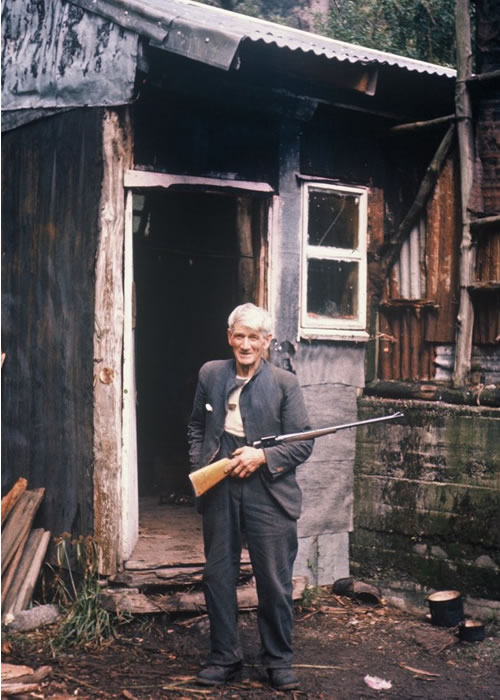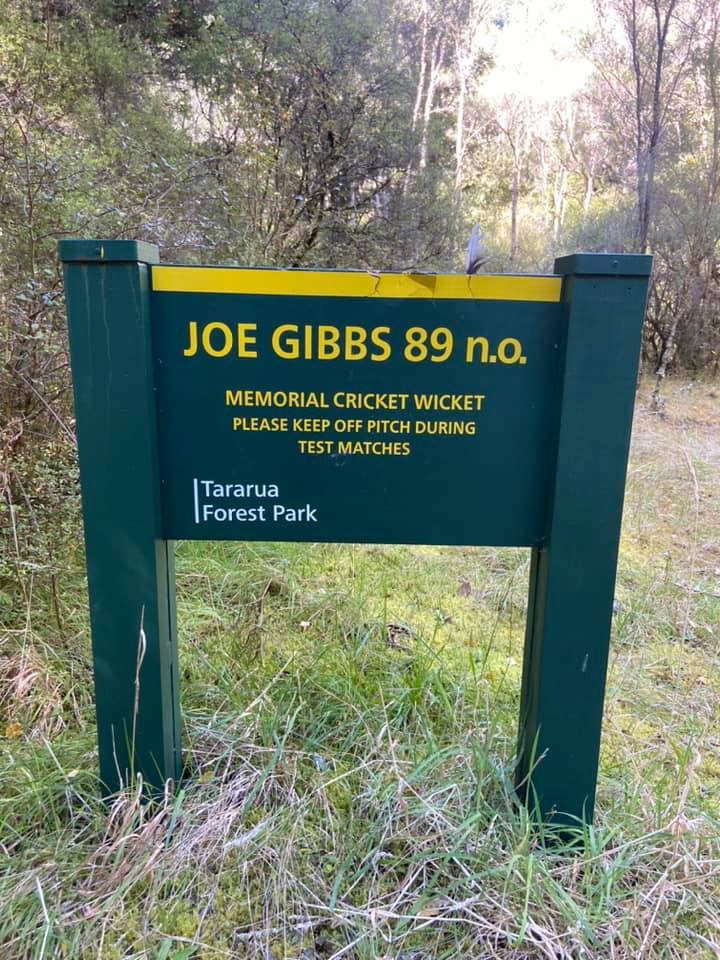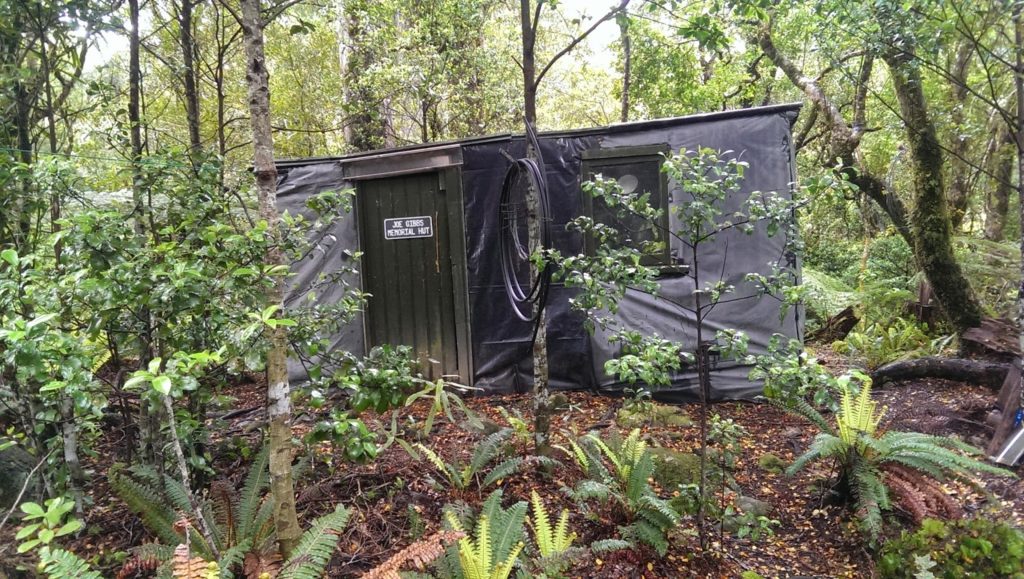Joe was a “resident” in the Tauherenikau Valley in the 1960s. He spent a lot of his time at the Tararua Tramping Club hut Tauherenikau hut. Trampers and hunters would often meet Joe at the other huts in the valley, Alloway Dickson and Cone hut. Joe was a well known hunter and bushman.

Joe at the Smiths Creek hut

Above – the Joe Gibbs memorial at the site of the first Tauherenikau hut. Joe built the hut for the Tararua tramping Club.

Above – The Joe Gibbs Memorial Hut found in the Tauherenikau Valley, downstream of the present-day Tutuwai Hut
From website of the Tararua tramping Club. Joe was born near Murchison on the Buller River. Growing up in this isolated area, he learnt to be an expert bushman in its remote valleys. A horseman and accurate shot, he served in the Boer war. In 1908 he went to the western US and Canada, worked as a sawyer-axeman on the great Californian redwoods, panned gold and worked silver mines.Back in New Zealand, he handled packhorses and sheep on Molesworth, then worked on the Wellington wharves. He joined the Tararua Tramping Club in 1921, leading a number of packhorse trips to new territory.
Never at home in the city, the Tararua Ranges became Joe’s patch. In 1923 he cut the first Marchant Track, and in 1928, cleared the route from the Tauherenikau to Totara Flats and Mountain House.
But it was in hut building that he made his biggest mark. During the hut building for the Hector Track, he helped extend the first Alpha Hut (1923), then built Field Hut for the Tararua Tramping Club (1924), pit sawing the framing timber onsite. Then came the first Kime Hut (1930), and the first Tauherenikau Hut (1930), where he often stayed. He was the Club’s most experienced bushman, and also a great deerstalker. For these services he was made a Club life member in 1944.
Field hut was built for the TTC by Joe for 460 pounds. The money came from a donation by noted Kapiti personality Willie Field MP, a founder of the Club, and a government grant. Joe pit sawed the framing timber from trees cut round the hut, to save packing it in. A feature of the hut is its compact design and sleeping loft. The hut, near the bushline, above Otaki Forks, opened up the now famous Southern Crossing track to Kaitoke.




